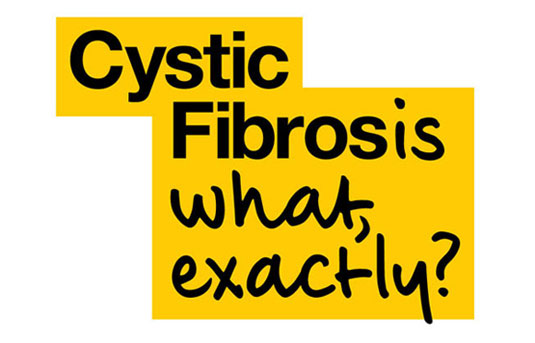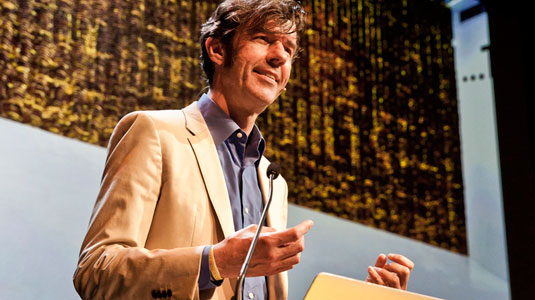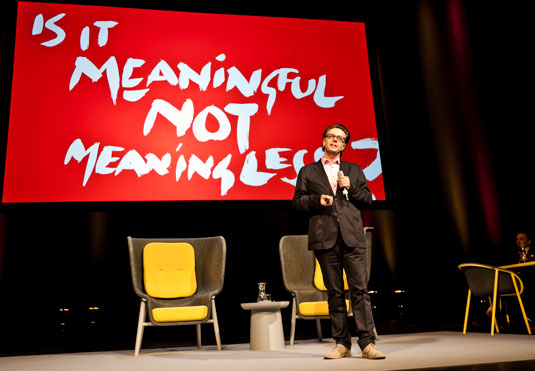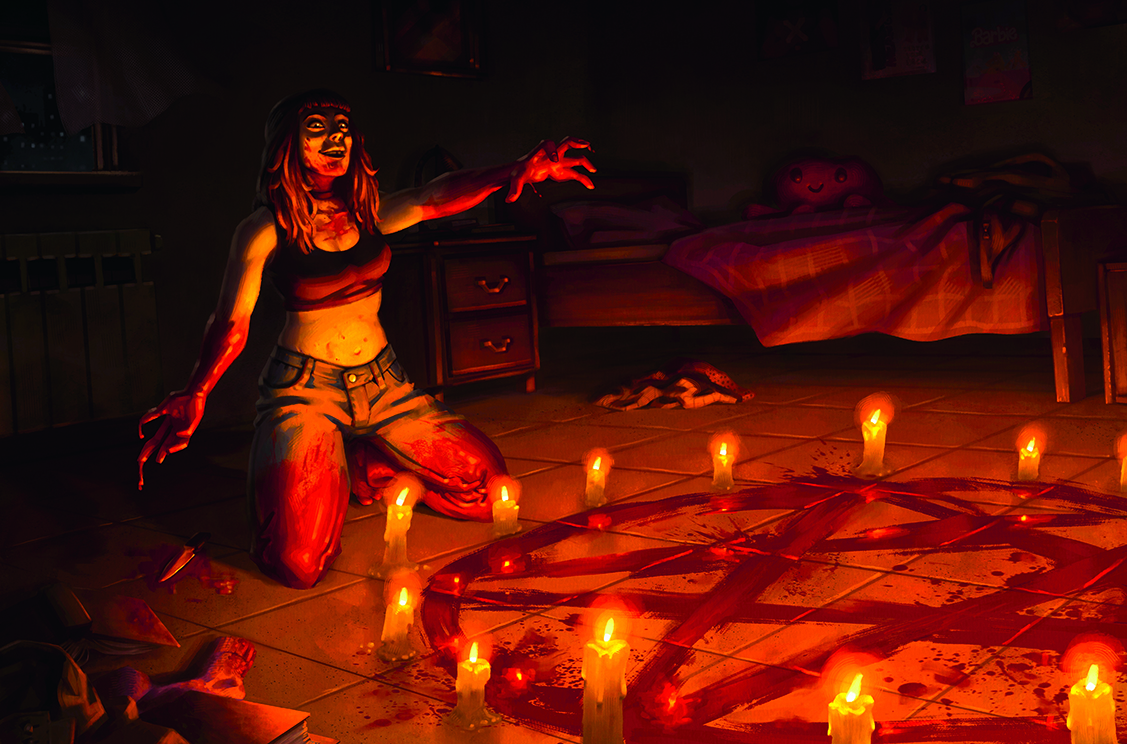8 reasons design studios should stay small
Michael Johnson and Stefan Sagmeister reveal why small is best at What Design Can Do 2015.
5. You're agile and adaptable – by necessity
In Johnson's What Design Can Do talk, he described himself as a "blur" – a writer, a designer, a strategist and many other things. In a small studio, job roles are likely to be more versatile, and that can mean the creative process is too.
"Classically, the process involved the strategy going to a certain point, the design brief was written, and then the design started," he recalls. "That doesn't always work."
"You tend to get this huge block of knowledge, insight and narrative, and the designers have to start – and the middle bit is very hard to navigate because designers tend to be very visual, as a rule, and strategists tend to be very verbal."

As a result, johnson banks blurs these stages of the process. "It's not a case of presenting a piece of paper and saying 'this is the brief'. Cystic Fibrosis is a really good example: the seed of the idea actually came during a research conversation with a client, four weeks into a six-month process."
06. You can be more selective with clients, and learn more from them
One of the most popular quotes from Sagmeister's breakout session during What Design Can Do was: "I only take on clients who are smarter than me. Stupid people have stupid products and stupid problems."
It's not rocket science: smaller studios have smaller overheads, and can therefore be more selective about who they work with. For Sagmeister, working directly with founders and CEOs and cutting out marketing departments helps. "There are very few stupid people at that level," he argues. "There are some nasty people, but we don't work with them either."

He recalls an initial meeting with a potential client: "I genuinely learnt something from them – a lightbulb went on, and it was like 'Of course that's how it is,' but I'd never heard it expressed that way. I don't know if they'll go with us, but if they do I look forward to follow-up meetings because I’ll learn something."
Daily design news, reviews, how-tos and more, as picked by the editors.
"Learning might not be quite as good as sex, but it's on the same level. It's in the interest of evolution for us to learn."
07. It can help you keep things simple (sometimes)
"I've never come across a project where being small is a disadvantage," insists Sagmeister. "The whole idea of an international branding conglomerate is one that was born in the 70s, and my guess is it might have a limited shelf life."
"If you look at the main visual signifiers of some of the world's biggest brands, they've all been done by tiny entities. Nike, Google, Apple… all done by an individual."

For Johnson, simplicity is beauty – and simple but effective ideas can arguably come more easily from a talented individual or small group. "Clarity and simplicity is very attractive to potential clients: we tell people, we're not going to muddy the water any further, you're not clear, you need to tell people what you do and why they should care."
"The paradox is that it often takes a very long time to come up with an idea that's really simple and seems obvious," he adds.
08. Get the balance right, and you can punch above your weight
Sagmeister concludes with a few gems of advice for any small studio looking to make an impact: "Always look at projects from the client's point-of-view, and present from the client's point-of-view too," he begins. "And listen extremely carefully."
"Only show one solution," is his next tip, part of Sagmeister & Walsh's famously self-assured approach that he freely admits may not work for everyone. "If that doesn’t work, discard it and show another one, but then you'd better get it right," he grins.
"But I do feel a little bit crappy saying that as advice," he adds. "This is what worked for us. If we fall on our faces, we know it and we fix it. Maybe some other stuff works for other people."
Exclusive WDCD offer: two-year Computer Arts subscription for the price of one

Computer Arts has teamed up with What Design Can Do to bring you an exclusive offer. Simply sign up to a two-year subscription to Computer Arts magazine and only pay for one!

Nick has worked with world-class agencies including Wolff Olins, Taxi Studio and Vault49 on brand storytelling, tone of voice and verbal strategy for global brands such as Virgin, TikTok, and Bite Back 2030. Nick launched the Brand Impact Awards in 2013 while editor of Computer Arts, and remains chair of judges. He's written for Creative Bloq on design and branding matters since the site's launch.
